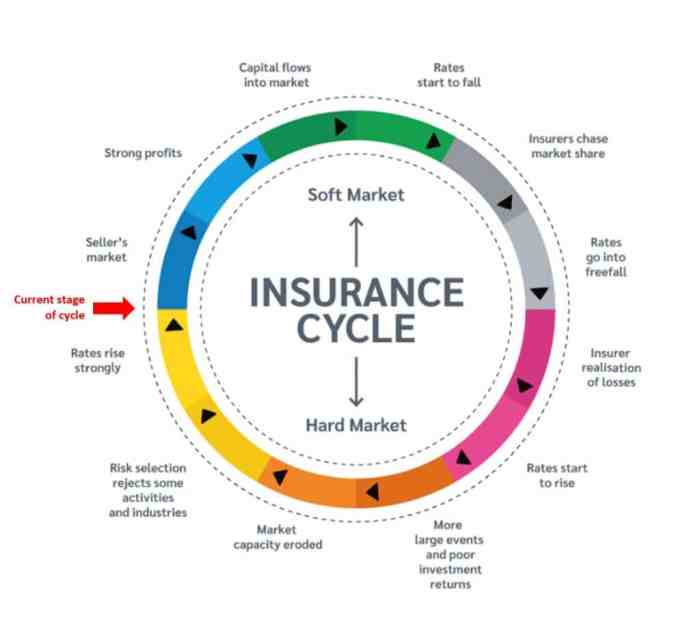
Can you change insurance mid policy? Absolutely! Whether you’ve experienced a life event or simply want to adjust your coverage, understanding the ins and outs of mid-policy insurance changes is crucial. Dive into this comprehensive guide to learn everything you need to know about modifying your insurance policy in the middle of its term.
From exploring eligibility criteria and available methods to assessing the impact on your coverage and premiums, this guide will empower you to make informed decisions about your insurance. We’ll also cover documentation requirements, communication strategies, and potential exceptions or limitations.
Plus, we’ll provide case studies and best practices to help you navigate the process seamlessly.
Eligibility for Mid-Policy Insurance Change

Mid-policy insurance changes are typically permitted under specific circumstances known as qualifying life events or changes in circumstances. These events trigger the right of the policyholder to adjust their coverage without penalty.
Qualifying Life Events
Qualifying life events that may allow for mid-policy insurance changes include:
- Marriage or divorce
- Birth or adoption of a child
- Death of a spouse or dependent
- Change in employment status (gaining or losing coverage)
- Relocation to a new state or zip code
- Significant change in income or assets
- Purchase or sale of a home
Changes in Circumstances
Changes in circumstances that may also qualify for mid-policy insurance changes include:
- Change in health status (e.g., diagnosis of a chronic illness)
- Change in driving habits (e.g., reduced mileage or new driver in household)
- Addition or removal of a vehicle from the policy
- Changes in coverage needs (e.g., increased liability limits)
Methods of Mid-Policy Insurance Change
Policyholders have several options for making mid-policy changes to their insurance coverage. Each method offers unique advantages and drawbacks.
Contacting the Insurer Directly
Reaching out to the insurance company directly is a straightforward approach. Policyholders can call, email, or visit the insurer’s website to request changes.
- Pros:Direct communication ensures accuracy and prompt response.
- Cons:May require multiple calls or emails, and hold times can be lengthy.
Working with an Insurance Agent
Insurance agents serve as intermediaries between policyholders and insurers. They can assist with mid-policy changes and provide guidance.
- Pros:Agents offer personalized advice and can navigate the insurance process seamlessly.
- Cons:May charge fees for their services, and availability can be limited.
Using an Online Platform
Some insurance companies provide online platforms for policyholders to make changes. These platforms offer convenience and accessibility.
- Pros:Quick and easy, with 24/7 availability.
- Cons:May not be available for all insurers or all types of changes.
Impact of Mid-Policy Insurance Change on Coverage

Mid-policy insurance changes can have a significant impact on the policyholder’s coverage. These changes may affect premium adjustments, coverage limits, and deductibles.Premium adjustments can occur when a policyholder makes changes that alter the risk profile of their policy. For example, adding a new driver to an auto insurance policy or increasing the coverage limits on a homeowner’s insurance policy may result in a higher premium.
Conversely, removing a driver from an auto insurance policy or decreasing the coverage limits on a homeowner’s insurance policy may result in a lower premium.Coverage limits are the maximum amount that an insurance company will pay for a covered loss.
Mid-policy changes that increase coverage limits may provide additional protection for the policyholder, but they may also result in a higher premium. Conversely, mid-policy changes that decrease coverage limits may reduce the amount of protection available to the policyholder, but they may also result in a lower premium.Deductibles are the amount that the policyholder is responsible for paying out-of-pocket before the insurance company begins to pay for a covered loss.
Mid-policy changes that increase deductibles may reduce the policyholder’s premium, but they may also result in higher out-of-pocket costs in the event of a loss. Conversely, mid-policy changes that decrease deductibles may increase the policyholder’s premium, but they may also result in lower out-of-pocket costs in the event of a loss.
Positive Impacts
Mid-policy insurance changes can have several positive impacts on coverage, including:
Increased coverage limits
Mid-policy changes that increase coverage limits can provide additional protection for the policyholder in the event of a loss. This can be especially important for policies that cover high-value items, such as homes or vehicles.
Decreased deductibles
Mid-policy changes that decrease deductibles can reduce the policyholder’s out-of-pocket costs in the event of a loss. This can be especially helpful for policyholders who have limited financial resources.
Improved risk profile
Mid-policy changes that improve the policyholder’s risk profile can result in a lower premium. This can be achieved by making changes such as installing a security system or taking a defensive driving course.
Negative Impacts
Mid-policy insurance changes can also have several negative impacts on coverage, including:
Decreased coverage limits
Mid-policy changes that decrease coverage limits can reduce the amount of protection available to the policyholder in the event of a loss. This can be especially detrimental for policies that cover high-value items, such as homes or vehicles.
Increased deductibles
Mid-policy changes that increase deductibles can increase the policyholder’s out-of-pocket costs in the event of a loss. This can be especially burdensome for policyholders who have limited financial resources.
Worsened risk profile
Mid-policy changes that worsen the policyholder’s risk profile can result in a higher premium. This can be caused by making changes such as adding a high-risk driver to an auto insurance policy or moving to a high-crime area.
If you’re wondering if you can change insurance mid-policy, the answer is yes, but it depends on the type of insurance you have. For instance, if you’re looking for a flexible life insurance policy, flex term life insurance might be a good option.
This type of policy allows you to adjust your coverage amount and premium payments over time, giving you the flexibility to meet your changing needs. However, it’s important to note that changing insurance mid-policy may have implications for your coverage and premiums, so it’s always a good idea to consult with an insurance professional before making any changes.
Considerations for Mid-Policy Insurance Change

Mid-policy insurance changes should not be undertaken without careful consideration. Policyholders must evaluate several factors before making such alterations to ensure informed decision-making.
A thorough review of the existing policy is crucial. This includes understanding the coverage limits, deductibles, and exclusions. Identifying any areas that need adjustment can help policyholders determine if a mid-policy change is necessary.
Implications of Changes
Policyholders must also consider the implications of making mid-policy changes. These may include:
- Increased premiums:Changing coverage limits or adding endorsements can lead to higher premiums.
- Loss of coverage:Removing or reducing coverage can result in gaps in protection.
- Waiting periods:Some changes may trigger waiting periods before coverage becomes effective.
Comparison of Options
Before making any changes, policyholders should compare options from multiple insurers. This allows them to assess different coverage options and premium rates. Obtaining quotes from several insurers helps ensure that policyholders are getting the best value for their money.
The flexibility of insurance policies can be a concern for many, including the ability to change providers mid-policy. While this may be an option, it’s important to understand the potential implications and consider the insights of experts like Dave Ramsey.
His perspective on term life insurance, as outlined in this article , emphasizes the importance of evaluating your insurance needs and exploring different options before making any changes mid-policy.
Documentation and Communication
Mid-policy insurance changes require proper documentation and effective communication to ensure a smooth and efficient process.
Documentation
To initiate a mid-policy change, you must provide supporting documentation that verifies the reason for the change. This documentation may include:
- Proof of marriage or divorce
- Proof of change of address
- Proof of vehicle purchase or sale
- Proof of change in employment or income
Communication
Once you have gathered the necessary documentation, it is important to communicate the changes to your insurer promptly. You can do this by:
- Calling your insurer’s customer service line
- Visiting your insurer’s website
- Writing a letter to your insurer
When communicating the changes, be sure to provide clear and concise information, including the following:
- Your policy number
- The type of change you are requesting
- The effective date of the change
- Any supporting documentation
Tips for a Smooth Process
To ensure a smooth and efficient mid-policy insurance change, consider the following tips:
- Gather all necessary documentation before contacting your insurer.
- Be prepared to provide clear and concise information when communicating the changes.
- Follow up with your insurer to confirm that the changes have been processed.
Exceptions and Limitations: Can You Change Insurance Mid Policy
Mid-policy insurance changes are generally permitted, but certain exceptions and limitations may apply. These restrictions are typically imposed to ensure the stability and integrity of insurance policies.
One common limitation is the timing of the change. Most insurers have specific deadlines for making mid-policy changes, such as a grace period after the policy’s inception or a cutoff date before the policy’s renewal.
Changes Affecting Risk Profile
Changes that significantly alter the policyholder’s risk profile may not be allowed mid-policy. For example, adding a high-risk driver to an auto insurance policy or increasing the coverage amount for a homeowner’s insurance policy may require underwriting approval and could result in a premium increase or policy cancellation.
Changing insurance mid-policy is possible, but it’s important to check with your insurer first. If you’re considering a switch, it’s worth researching different options to find the best coverage for your needs. For example, if you’re looking for information on the 2015 Nissan Rogue insurance cost , you can find detailed breakdowns of premiums and coverage options online.
After gathering information, you can make an informed decision about whether or not to change your insurance mid-policy.
Changes Related to Policy Terms
Mid-policy changes that violate the policy’s terms and conditions may also be restricted. For instance, changing the named insured on a life insurance policy may not be permitted without the consent of the original insured.
Workarounds and Alternatives
If a policyholder encounters limitations to making mid-policy changes, they can explore alternative options. These may include:
- Waiting until the policy’s renewal date to make the desired changes.
- Contacting the insurer to discuss potential exceptions or workarounds.
- Purchasing a separate policy to cover the additional risk or need.
Additional Considerations for Specific Insurance Types
Different types of insurance policies have unique considerations and procedures for mid-policy changes. Understanding these nuances is crucial to ensure a smooth and effective transition.
Auto Insurance
Eligibility:Mid-policy changes are typically allowed for events like vehicle purchase, sale, or change of address. Methods:Changes can be made by contacting the insurance company directly or through an insurance agent. Impact:Changes may affect coverage limits, premiums, and deductibles. Documentation:Proof of new vehicle ownership or address change is typically required.
If you’re considering changing insurance mid-policy, it’s important to check with your provider to see if you’ll be eligible for a refund. While most policies don’t allow for refunds, there may be exceptions. For instance, if you’re switching to a different type of insurance, such as from health insurance to does insurance cover lasik reddit , you may be able to get a refund for the unused portion of your premium.
It’s always worth checking with your provider to see if you’re eligible for a refund before making the switch.
Home Insurance
Eligibility:Mid-policy changes are generally permitted for renovations, additions, or changes in property use. Methods:Changes can be initiated by contacting the insurance provider or agent. Impact:Modifications may impact coverage amounts, premiums, and deductibles. Documentation:Detailed descriptions of changes and supporting documents (e.g., building permits) may be necessary.
Health Insurance
Eligibility:Mid-policy changes are usually limited to specific events, such as marriage, birth of a child, or loss of coverage. Methods:Changes are typically made during the open enrollment period or through qualifying life events. Impact:Changes may affect coverage benefits, premiums, and deductibles.
Documentation:Proof of life events (e.g., marriage certificate, birth certificate) is generally required.
Life Insurance
Eligibility:Mid-policy changes are typically allowed for adjustments to coverage amounts, beneficiaries, or premium payments. Methods:Changes can be initiated by contacting the insurance company or agent. Impact:Changes may affect coverage amounts, premiums, and policy terms. Documentation:Changes to beneficiaries may require a new beneficiary designation form.
Case Studies
Examining real-world scenarios of mid-policy insurance changes offers valuable insights into the factors that influence outcomes and highlights best practices and potential pitfalls.
By analyzing successful and unsuccessful cases, we can identify common patterns and lessons learned, enabling individuals to make informed decisions and navigate mid-policy insurance changes effectively.
Successful Mid-Policy Insurance Change, Can you change insurance mid policy
- Scenario:A homeowner proactively reviewed their insurance policy and identified gaps in coverage. They reached out to their insurer and successfully negotiated an amendment to add additional coverage for valuables and personal belongings.
- Factors contributing to success:
- Timely review and assessment of coverage needs
- Proactive communication with the insurer
- Clear understanding of policy terms and conditions
Unsuccessful Mid-Policy Insurance Change
- Scenario:A business owner attempted to reduce their insurance premiums by switching to a lower-cost provider mid-policy. However, they failed to adequately research the new provider and later discovered significant gaps in coverage.
- Factors contributing to failure:
- Insufficient due diligence in selecting a new provider
- Lack of understanding of the implications of changing providers
- Failure to review the new policy carefully before making the switch
Final Conclusion

Whether you’re seeking to enhance your coverage, reduce premiums, or simply adapt to changing circumstances, understanding how to change insurance mid policy is essential. By carefully considering the factors discussed in this guide, you can confidently make informed decisions that align with your evolving needs.
Remember, effective communication, proper documentation, and a thorough understanding of your policy are key to a smooth and successful mid-policy insurance change.
Detailed FAQs
Can I change my insurance policy at any time?
Typically, insurance policies allow for changes during specific times, such as during the renewal period or upon experiencing a qualifying life event.
What are some examples of qualifying life events that allow for mid-policy changes?
Marriage, divorce, birth or adoption of a child, relocation, and job loss are common qualifying life events.
How can I make mid-policy insurance changes?
You can contact your insurance provider directly, work with an insurance agent, or use an online platform to initiate mid-policy changes.
What documentation is required for mid-policy insurance changes?
Proof of the qualifying life event, such as a marriage certificate or birth certificate, may be required.
Can I change insurance providers mid-policy?
Yes, but it’s important to compare quotes and coverage options from multiple insurers before making a switch.

